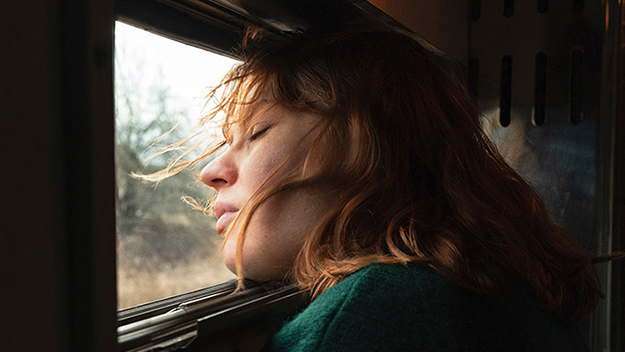Compartment No. 6 (Juho Kuosmanen, 2022) A sparely adorned period romance set in late Yeltsin-era Russia, Juho Kuosmanen’s Compartment No. 6 parcels out its few obvious retro elements—a Walkman, a camcorder, the twice-heard 1986 Euro hit “Voyage, Voyage”—less to elicit our own nostalgia than to suggest the future nostalgia these ephemera will someday evoke for the film’s sentimental heroine. With the lightest touch, Kuosmanen, along with his production designer Kari Kankaanpää and cinematographer J-P Passi, crafts a mise en scène that feels like one seamless, unspooling memory as opposed to a generalized lookbook of borrowed ones. The result is a film of sweet, uncomplicated loveliness—an increasingly undervalued cinematic tonality. Taking place circa 1997, primarily on a train en route from Moscow to Murmansk, the film finds Laura, a Finnish archeology student inhabited with perfectly modulated diffidence by actress Seidi Haarla, alone and already lonely in a half-hearted quest to seek the famed Kanozero Petroglyphs. Trapped in the titular compartment with an uncouth charmer, a Russian mining worker named Ljoha (a thoroughly embodied performance by Yuri Borisov), Laura clings at first to her camcorder and its stored images of a cosmopolitan life and partner left behind in the city. As she begins to give herself over to the unlikely bond forming between herself and her cabinmate, however, the film morphs from a comedy of discomfort into a romance of circumstance—the kind where you learn someone’s smell before learning their last name, and where you embrace the moment that is while letting go of what you hoped it might be. Unlike Joachim Trier’s The Worst Person in the World or Mia Hansen-Løve’s Bergman Island, two other recent films about young women facing personal inflection points, Compartment No. 6 doesn’t make any expressionistic or symbolic hay out of Laura’s interior transformation, which occurs subtly in close to real time. Kuosmanen eschews the time-stopping flourishes of Trier and the self-reflexive frames of Hansen-Løve, instead tracing granular behavioral shifts and gradual emotional progressions with gentle realism. The world his characters navigate is drably practical and ineluctably disappointing, resistant to the romantic significance they continually ask of it. In a key scene late in the film, Laura admits to her thirst for a life gleaned from books, or perhaps seen at the movies, but it’s the strength of Kuosmanen’s film that the character’s own story remains firmly grounded in the unfulfilling, unpredictable, and often wondrously formless lives we all live. Edo Choi is the Assistant Curator of Film at the Museum of the Moving Image, as well as a freelance critic and projectionist.
